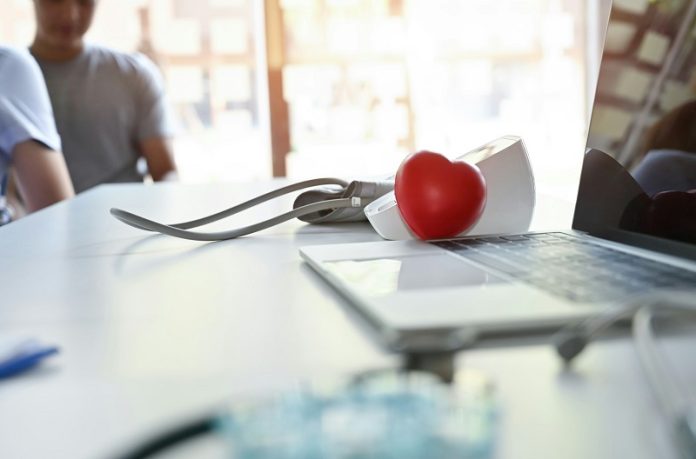
A new study shows that a simple conversation in the emergency room can help patients manage high blood pressure—even if they came in for a completely different reason.
The research was done by scientists at the University of Illinois Chicago (UIC) and published in JAMA Cardiology.
High blood pressure, also called hypertension, is often called the “silent killer” because it usually has no symptoms until it leads to serious health problems like heart failure, stroke, or kidney disease. It affects nearly half of all adults in the U.S. and is especially common in underrepresented communities.
In this study, more than 500 patients at UI Health’s emergency department took part. All had high blood pressure and were there for other health concerns.
Before going home, some of the patients received a short consultation about their blood pressure and were given a blood pressure monitor to use at home. These monitors were paired with their smartphones.
Six months later, the patients who received this intervention had lower blood pressure compared to those who didn’t. This shows that even a short visit in the emergency room can help people take better control of their blood pressure—especially if they don’t regularly see a doctor.
Dr. Heather Prendergast, the study’s lead author and a professor of emergency medicine at UIC, said this kind of support is especially important in emergency departments, which often serve people who don’t have easy access to regular health care.
Normally, people with high blood pressure are told to follow up with their doctor or visit a health clinic. But many don’t follow through, especially if they don’t feel sick. This is risky, because untreated high blood pressure can lead to serious problems later on.
The study focused on a mostly minority population, which tends to have higher rates of high blood pressure and worse health outcomes. In fact, 92% of the study’s participants were from underrepresented groups.
This is the first study of its kind supported by the National Heart, Lung, and Blood Institute to focus on this specific patient group in the emergency room setting.
When the study started, the area served by UI Health had higher-than-average rates of uncontrolled blood pressure. But after several efforts, including this new emergency room approach, those rates have now improved and are slightly better than the national average.
Dr. Prendergast said that the results were very encouraging. In a survey after the study, more than 90% of participants said they would recommend the program to friends and family. They also felt more informed and confident about managing their blood pressure.
Next, the team plans to test this approach in emergency rooms in five other states. Dr. Prendergast hopes that one day, offering this kind of support and tools in the emergency room becomes standard practice—not just handing out referrals, but really helping people take charge of their health.
If you care about high blood pressure, please read studies about potatoes and high blood pressure, and top 10 choices for a blood pressure-friendly diet
For more information about high blood pressure, please see recent studies about impact of vitamins on high blood pressure you need to know, and the powerful link between high blood pressure and a potassium-rich diet.
The study is published in JAMA Cardiology.
Copyright © 2025 Knowridge Science Report. All rights reserved.



